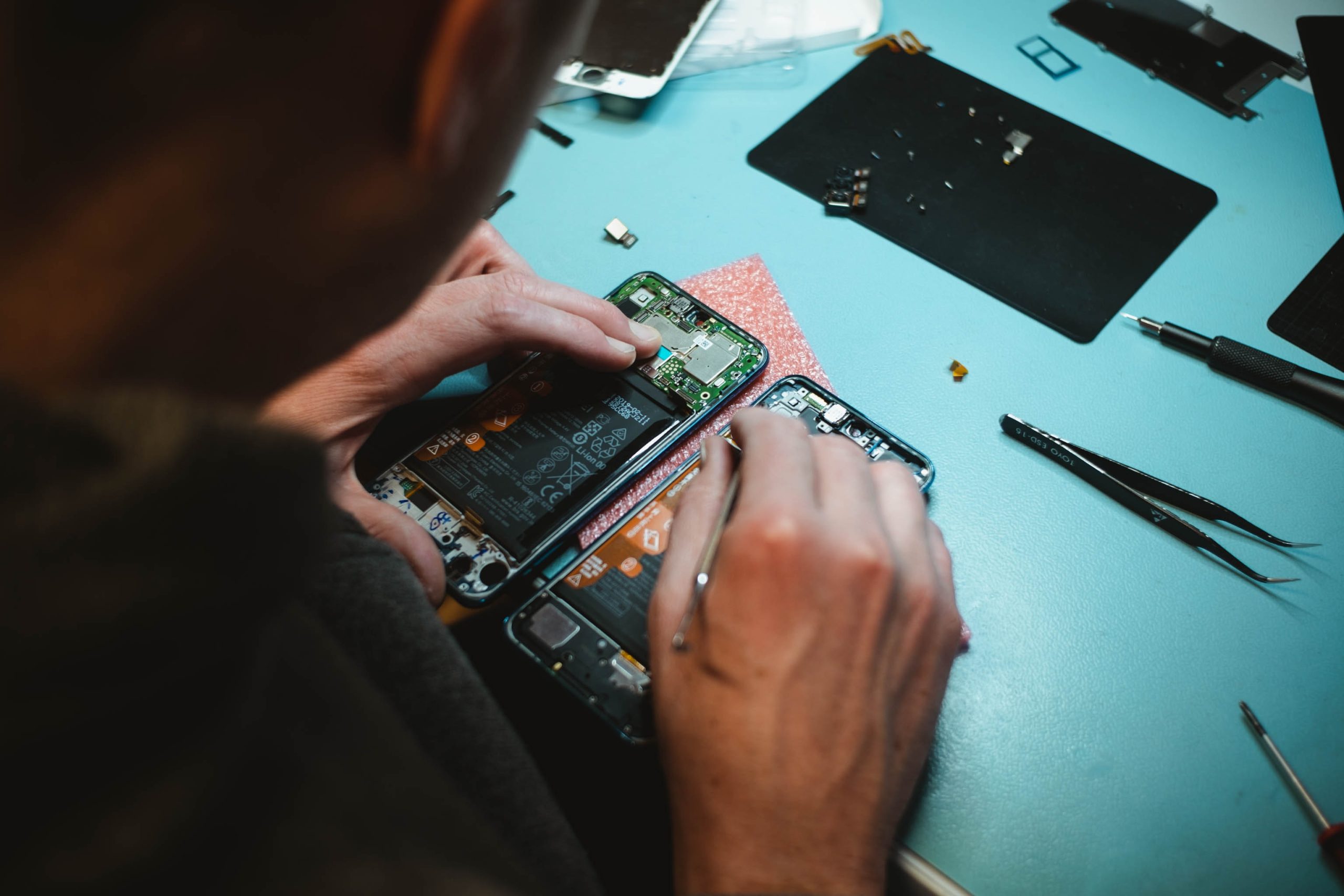Repairing vs. Replacing
With the average smartphone exceeding $1k, the question of whether to repair or replace it is a significant one. After all, if your child chucks your phone across the room or your laptop screen goes black, it’s important to know your options. Let’s start with some pros and cons.Pros and Cons of Repairing Broken Technology
When it comes to fixing a busted tablet or computer, there are definitely pros and cons. Here are the essential things to keep in mind. PRO: Cost-savings: Even if your smartphone is only six months old, your replacement may involve an upgrade, which can represent a steep cost. The cost of repair is much cheaper. PRO: Being green: Landfills are full of electronic waste, much of which is leeching toxic chemicals into the ground and water systems. Getting your broken tech repaired may be the more sustainable and environmentally friendly option. PRO: Know what you’re getting: For some people, learning a new device is anything but a pleasure. If you are able to repair an old one, the system and device itself will be familiar to you and require no learning. PRO: Information security: Depending on what password protections, cloud storage or other security standards you follow, a discarded device may be susceptible to hacking. Thrown out tech may, in some cases, represent a security risk. CON: Risk of additional issues: Sometimes, like a broken arm, repaired tech never quite gets back to normal. The patches or fixes applied could lead to ongoing glitches. CON: Difficult path to repair: Many fixes aren’t straightforward. It can require some pretty sophisticated knowledge to get to the root cause and, even then, not all repairs are possible. CON: Lack of parts: Depending on how old your tablet, phone or computer is, it may be hard to locate comparable parts. If the wrong parts are used, you may experience ongoing issues and malfunction. There are also arguments on both sides of replacing broken technology.Pros and Cons of Replacing Broken Technology
Replacing broken technology may end up being your only choice. Whether it’s your first resort or last resort, here are some of the pros and cons you’ll face. PRO: Instant gratification: Sometimes, a cracked screen gets you the new phone you actually want. Broken down technology can be the perfect excuse to splurge on new tech and get what you want right away, without waiting for diagnosis and repair. PRO: Upgrades: Shapes, designs and features are ever-evolving in the world of tech. Replacing broken devices with brand-new ones ensures that you have access to the latest greatest systems. PRO: Enhanced features: Longer lasting batteries, smoother interfaces, enhanced interoperability: new tech has plenty of appealing features that can make your life and work easier. CON: Integration challenges: If you have an inkling to get a new device but it doesn’t sync up well with your other tech, it can be super frustrating. CON: New isn’t always better: Tech companies have the marketing down. It may seem like the most recent device is the best but that isn’t always true. Each generation of a device has upgraded operating systems and features that may or may not improve your life. Note: the Right to Repair movement advocates for a minimum opportunity to repair broken devices, some of which have highly secretive designs. Whether you see the scale tip in favor of the pros or the cons, it’s good to weigh all your options.Repair vs. Replace Cost Analysis
Any repair or replace decisions are going to factor in money. Your budget may make the decision for you. Here are some calculations you should keep in mind:| Device Type | Average Cost to Replace | Average Cost to Repair |
| Tablet | $450 | $150-$300 |
| Smartphone | $500-$1,000 | $75-$200 |
| Desktop computer | $500+ | $300+ |
| Laptop | $1,000 | $300+ |
| Printer | $200 | $75 |
| Office printers (multifunction) | $1,000-$5,000 | $250 |


